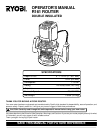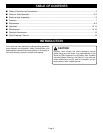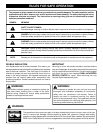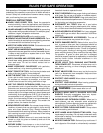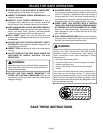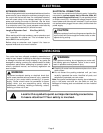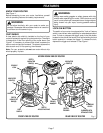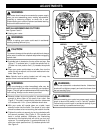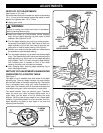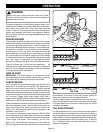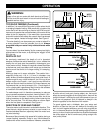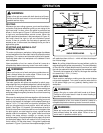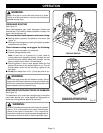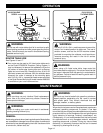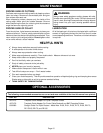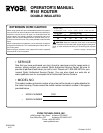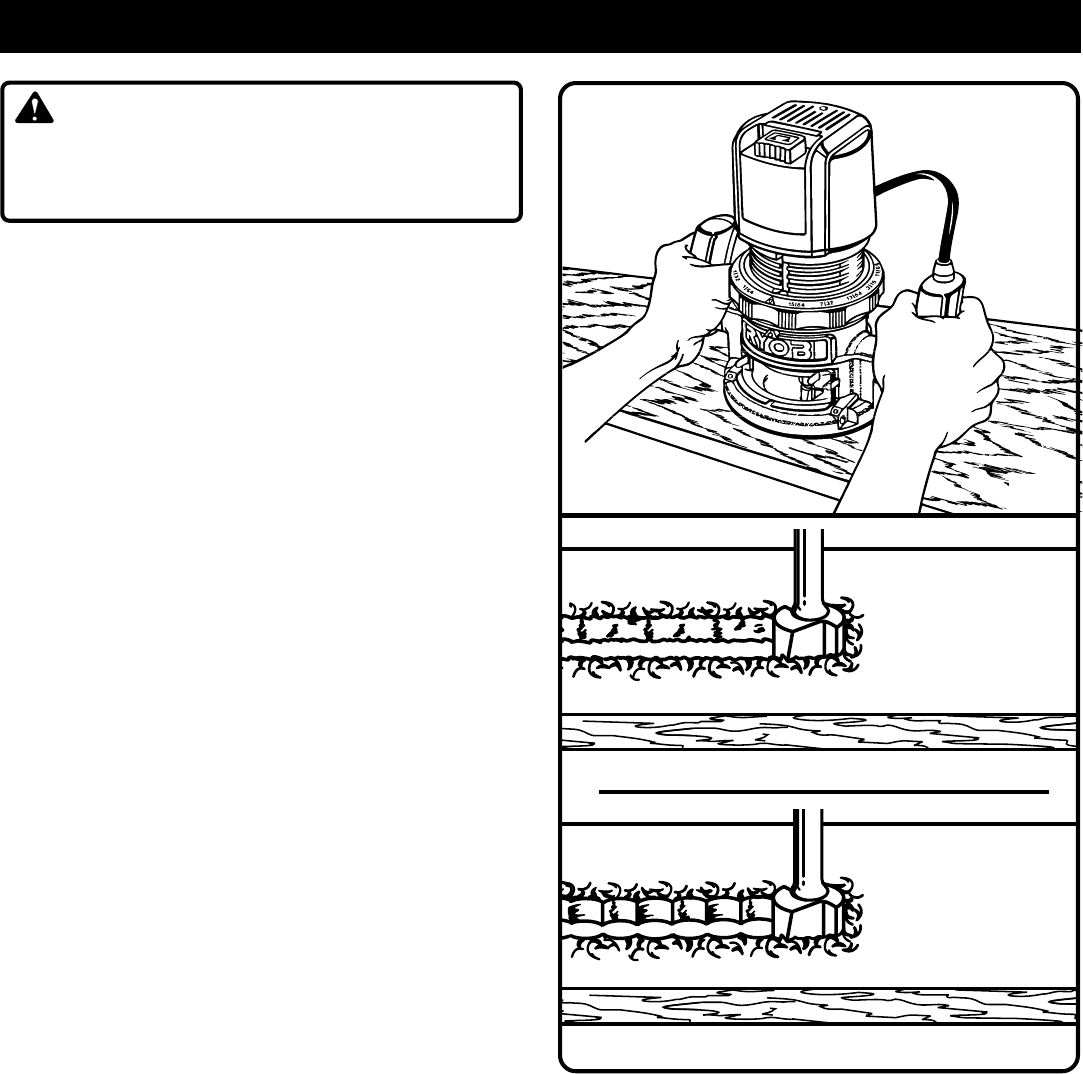
Page 10
be advanced. If the wood is very hard, knotty, gummy or
damp, the operation must be slowed still more.
You can always detect “force feeding” by the sound of the
motor. Its high-pitched whine will sound lower and stronger
as it loses speed. Also, the strain of holding the tool will be
noticeably increased.
TOO SLOW FEEDING
It is also possible to spoil a cut by moving the router forward
too slowly. When it is advanced into the work too slowly, a
revolving bit does not dig into new wood fast enough to take
a bite; instead, it simply scrapes away sawdust-like particles.
Scraping produces heat, which can glaze, burn, or mar the
cut— in extreme cases, can even overheat the bit so as to
destroy its hardness.
Fig. 8
OPERATION
Fig. 9
TOO FAST
TOO SLOW
For ease of operation and maintaining proper control, your
router has two handles, one on each side of the router base.
When using your router hold it firmly with both hands as
shown in
Figure 8
. Turn router on and let motor build to its full
speed, then gradually feed cutter into workpiece. Remain
alert and watch what you are doing. Do not operate router
when fatigued.
PROPER FEEDING
The right feed is neither too fast nor too slow. It is the rate at
which the bit is being advanced firmly and surely to produce
a continuous spiral of uniform chips — without hogging into
the wood to make large individual chips or, on the other hand,
to create only sawdust. If you are making a small diameter,
shallow groove in soft, dry wood, the proper feed may be
about as fast as you can travel your router along your guide
line. On the other hand, if the bit is a large one, the cut is deep
or the wood is hard to cut, the proper feed may be a very slow
one. Then, again, a cross-grain cut may require a slower
pace than an identical with grain cut in the same workpiece.
There is no fixed rule. You will learn by experience. . . by
listening to the router motor and by feeling the progress of
each cut. If at all possible, always test a cut on a scrap piece
of the workpiece wood, beforehand.
RATE OF FEED
IMPORTANT: The whole "secret" of professional routing
and edge shaping lies in making a careful setup for the cut
to be made and in selecting the proper rate of feed.
FORCE FEEDING
Clean, smooth routing and edge shaping can be done only
when the bit is revolving at a relatively high speed and is
taking very small bites to produce tiny, cleanly severed
chips. If your router is forced to move forward too fast, the
RPM of the bit becomes slower than normal in relation to its
forward movement. As a result, the bit must take bigger bites
as it revolves. “Bigger bites” mean bigger chips, and a
rougher finish. Bigger chips also require more power, which
could result in the router motor becoming overloaded.
Under extreme force-feeding conditions the relative RPM of
the bit can become so slow—and the bites it has to take so
large—that chips will be partially knocked off (rather than
fully cut off), with resulting splintering and gouging of the
workpiece.
See Figure 9.
Your router is an extremely high-speed tool (25,000 RPM
no-load speed), and will make clean, smooth cuts if allowed
to run freely without the overload of a forced (too fast) feed.
Three things that cause “force feeding” are bit size,
depth-of-cut, and workpiece characteristics. The larger the
bit or the deeper the cut, the more slowly the router should
WARNING:
Keep a firm grip on router with both hands at all times.
Failure to do so could result in loss of control leading to
possible serious injury.



